Digital notes vs Handwritten notes which is the best?
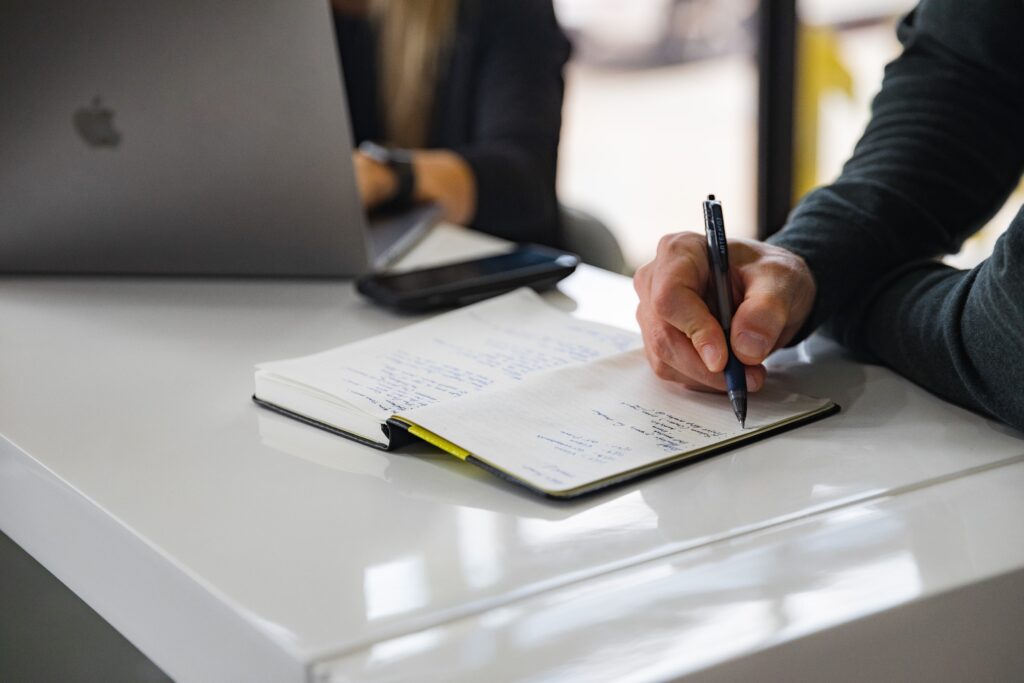
When we enter university we think that things will be the same as the high school or cram past. Just take notes in the notebook and only review it.
However, entering college, I could see that my technique of taking notes was not as efficient as in the past, also realizing that this method did not work for all subjects.
So, I started to research a bit of the controversial topic, digital notes? Or physical notes? Give attention to the class? Which method is better for learning? What helps me buy time? What is the most efficient method?
With the pandemic, we could see a change in the academic scenario, which was already in the transition process of implementing technology to help students during their studies.
However, with the use of notebooks, iPads, and various types of apps to create notes, summaries, and flashcards, it has been seen that students’ life has changed significantly.
How has the pandemic affected studies?
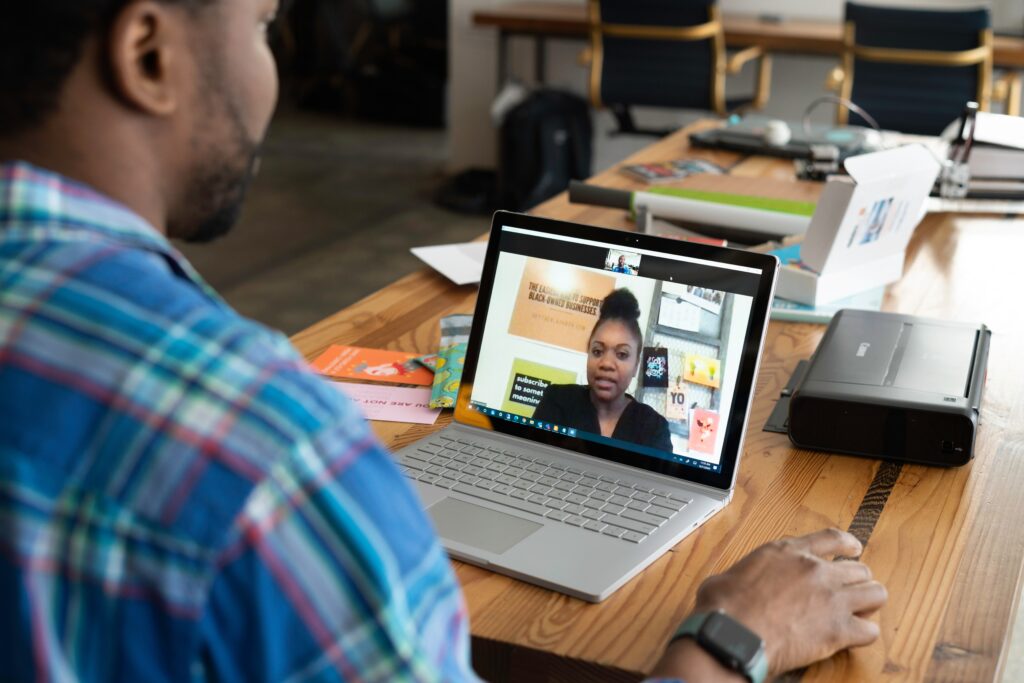
With the current situation, we had to adapt our ways of study, moving to full-time online, hybrid modalities, and now more for 2022 to return to full-time presential classes.
Given that, students were affected, with the need to move from a physical world to something digital and online.
With this new reality, classes migrated to the digital world. Even so, having to make both physical and digital notes.
I did the first and half of my second year online, and I realized I needed to adapt.
So I started to research, looking for other med students who adapted and adjusted their study methods when this transition came.
I don’t know about you, but my university professors gave twice the content online when it was face-to-face.
Personal experiences.
Starting my first year, I attended the virtual classes of anatomy and biology and realized that when I made notes written on paper, some things happened that didn’t make my study any easier:
- – I lost my notes
- – I couldn’t find the specific content I wanted to review.
- – I spent a lot of time creating notes on paper, resulting in little time for reviewing.
In anatomy, I studied 70% of the time based on images, with the result that physical notes were merely impossible to aggregate as there was no stationery store open, so I could not just go and print and create a decent summary.
So I started to migrate my notes to digital notes.
I typed the classes I had, filtering relevant information to the subject given, mainly biology.
Then I started to see some differences between the notes I was creating.
Physical notes vs digital notes:
Physical notes:

Studies have shown that students who make handwritten notes tend to memorize more easily and remember what is being written.
As we know, writing down information during class on paper and pen, we have to write only important information, because it is humanly impossible to write 95% of what is being spoken in class.
So we tend to filter information, write down the most important, connect with relevant facts making it more comfortable in our notes to study later.
“Taking notes by hand can be better for understanding content compared to typing.”
Strengths:
- Very useful for students who don’t rely too much on time to create handwritten notes.
- Or you prefer to have physical material.
- Accessible to everyone.
- Help reinforce given content
- Force you to think about what’s being written
Negative points:
- They need organization.
- Hard to find specific topics in the middle of large blocks of sheets.
- The physical weight of carrying large books and notebooks everywhere.
- Easy to lose or spoil.
Digital Notes:

We know that digital notes are easier and simpler to create rather than writing down information on paper.
However, like all study material, it is necessary to have organization and creativity so the material is more manageable to review again.
I’ve seen some students say that digital grades can be better because it takes less time to create summaries with them.
So I applied the method of making my summaries with digital notes using the application (Word. You can use as well google docs provides one).
Using these methods I could see some positive points as well as negatives.
Strengths:
- Easy to edit with a computer or iPad, and your apps make it easy to erase or remove any detail without worrying about erasing or damaging the summary.
- Accessible due to the cloud system, it becomes less likely to lose notes when stored with the organization. Which can be accessed from anywhere and on any device.
- Efficient: they are efficient over time, as students are required an absurd amount of content in a short time. Digital notes help you not to waste time when creating them.
- Shareable: Usually digital notes are simple to share with colleagues or friends who need a summary or a note with information that was not taken in class.
Negative points:
- Organization: This note-taking method requires organization, if you are a student who finishes editing and names it with some random sign which even you don’t understand, maybe it will be forgotten later and can be easily lost with other documents that you created.
So wasting time when reviewing the summary
Digital notes require organization so they can be easy to review later.
- Learning deficit: in moments of taking notes in classes, it is known that simply typing everything a teacher says can become inefficient.
Because it becomes something automatic, ending up not thinking about what you’re going to write, not even filtering information.
- Possible waste of time: in the same way digital notes can end up making the student get excited by putting too much information and images that results not relevant for review.
However, it does not match the purpose of the note taken, because the important thing about a note is to take important information, to later result in an efficient summary or material for creating a flashcard.
iPad or tablets
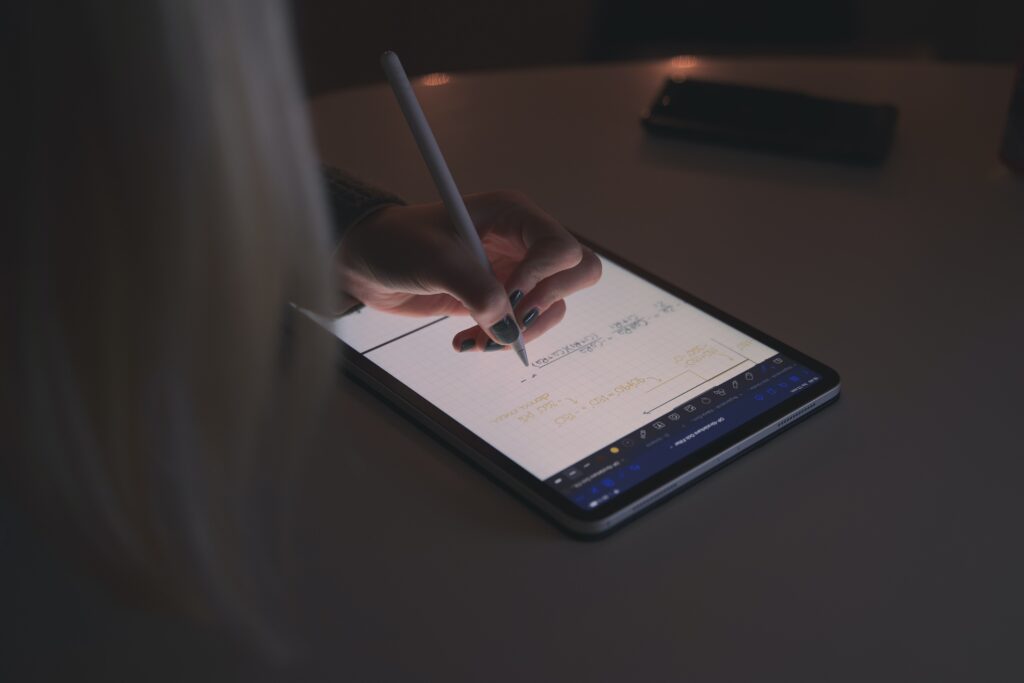
This new technology for students has made the life of note-taking much easier as it opens a door for a hybrid world.
You can either take notes by typing, buy keyboards that attach to these and allow you to type down notes, or use the screen itself to type.
Also, you can create handwritten notes with digital pens, doing the same as a physical but with widgets of a digital one.
It allows you to scribble like a pen, highlight, create underlining but on a tablet, with not a physical sensation of a sheet.
Apps like GoodNotes, notability, and OneNote are great for this use.
A disadvantage is the value of the set is expensive, and not every student can have such a tablet.
But it can be a great way to take notes and then create summaries.
Why the decision of digital notes??
As mentioned before, digital notes helped me buy time when putting together my summaries.
Taking information in class, adding content found in books and summaries of other colleagues.
In addition, it was practical for me because using applications such as (Word, Goodnotes5, Notability, OneNote) has great tools for editing notes, also facilitating the use of material.
Furthermore, the use of digital notes also opened the doors for me to a digital world, lately, I carry only my computer and iPad in my backpack, as I can access any note in my cloud and create summaries produced anywhere by just using one app.
The cloud and drives allow me to store all my notes knowing that if I forget my computer, I can access them from my cell phone and so on.
Some key points:
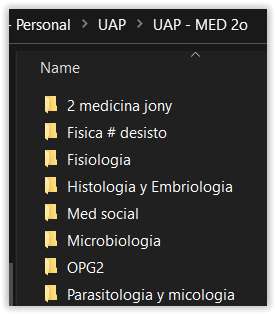
In the same way that digital notes made my life easier, they could become a headache if I wasn’t organized.
So whenever I finished a class, I kept it in folders that were already pre-separated from the specific subject.
So I started taking typed notes, always taking care not to automate my writing, because sometimes you can go into an automatic mode, typing and thinking about something completely different.
Always save the file on the drive because it can end up being lost if something happens to the electronic device.
Some tips to improve your study
- Always at the beginning of the day, make a list of the things that you are going to do. Separate your notes, summaries, or specific folders that will be reviewed: so you don’t waste time going through all the folders or files without knowing exactly what you need to study that day.
- Be organized: organize your files, don’t save your files anywhere or on different platforms.
- It can cost you valuable time looking for these summaries that you could be using to study.
- – Name in the correct order: If the files are named in a sequence or order, it becomes easier to be able to review or assemble the summaries, because you mentally already know what you are going to see or need to review. (remember? The first thing of the day).
But anyway, which method is ideal for each student?
It depends on the student and the subject.
Each person is different in the way they learn and study differently.
It is very important to know well how you learn, how you understand the subjects, as subjects are not the same and may require different study methods, resulting in completely different note-taking.
Often not require taking notes, but just paying attention as the PowerPoint provided in the class are already the material.
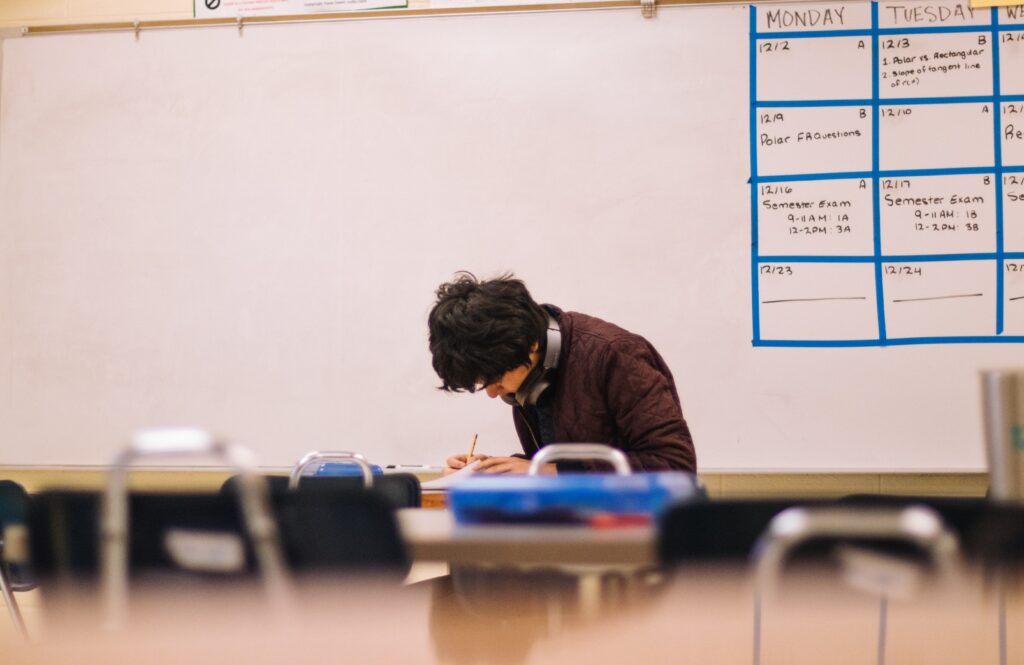
Other students use methods such as creating flashcards using “active recall” and spaced repetition on them.
I noticed that physiology classes were getting better when I digitally annotated important information given by professors during classes.
I added information from the book, adding diagrams and images to help understand concepts.
In the end, creating my renal system summaries became extremely quick and easy to understand, resulting in the productive use of my time to study the material.
You can see more about “how to use your time efficiently” in this post.
While in subjects like parasitology that I took, it made no sense to write down no information in class as only PowerPoints were already good enough for learning.
I had clinical case classes where I took notes by hand on my iPad because I had to filter important information, which I could not waste time reading additional content that would not be useful for that moment. (handwritten notes).
Conclusion.
So I don’t lose my mind trying to figure out which type of note is the most important, what I try to do is see which method of note-taking is the most efficient for a given subject.
Understanding how I learn the material and how I store the content.
I go on trial and error, my past experiences and other students’ ones.
Having recognized the way I learn, it gets easier to create summaries.
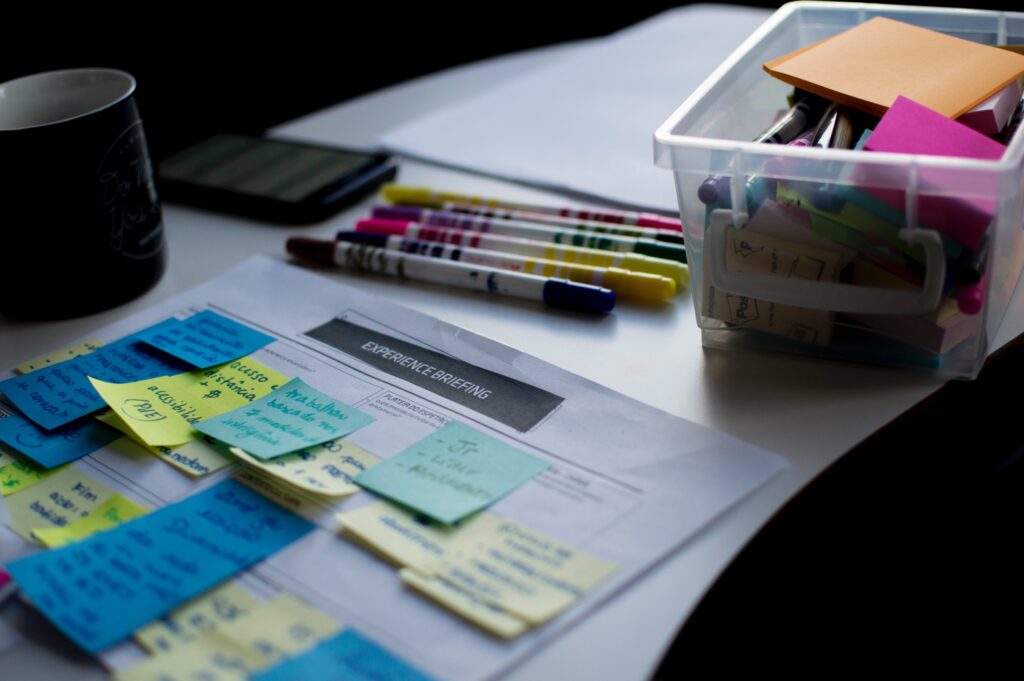
That’s why I recommend you test different ways of take-notes notes and which way can become more efficient for you, always remembering what to prioritize.
If you are having trouble knowing which method is ideal, take tests, look for other students from your university of higher years to be able to guide you during your journey.
Do not be afraid or ashamed, as showing interest and asking for help is the most important thing, and every student needs because you are never alone on this journey.
Here is a recommendation from a medical student
Therefore, look for methods on how to collect important information given in class in different ways. Filter it!
Recognize the most efficient way to study, with that you apply for this subject.
Although, you try to see if the same method works, if not, you switch to another one.
This way, you gain experience based on what you have been testing.
It may be that some methods work, others may not, sometimes you mix two techniques that end up working.
For example, I use digital notes when I create my summaries. Later I make a conceptual map applying what I have learned, with forces me to remember what I studied and what I created. Different? Yes, but it helped me.
With that, always experiment at the beginning of the semesters and not during exam periods, because in these moments you can see what is best for each subject.
Exam time is not like you can play trial and error, you need to already have a method of taking notes or creating material defined.
If digital notes serve you better because you have an easier time creating, sharing, and using them, great!.
If you prefer physical notes because you feel more comfortable and need to scratch and doodle and prefer to have something physical to study, no problem, that’s up to each person.
But it is always significant to choose what is favorable to your study.

Te felicito Kelvin! Excelente la idea del blog, muy interesante el contenido. Seguí así 💪🏼
Keep on working, great job!